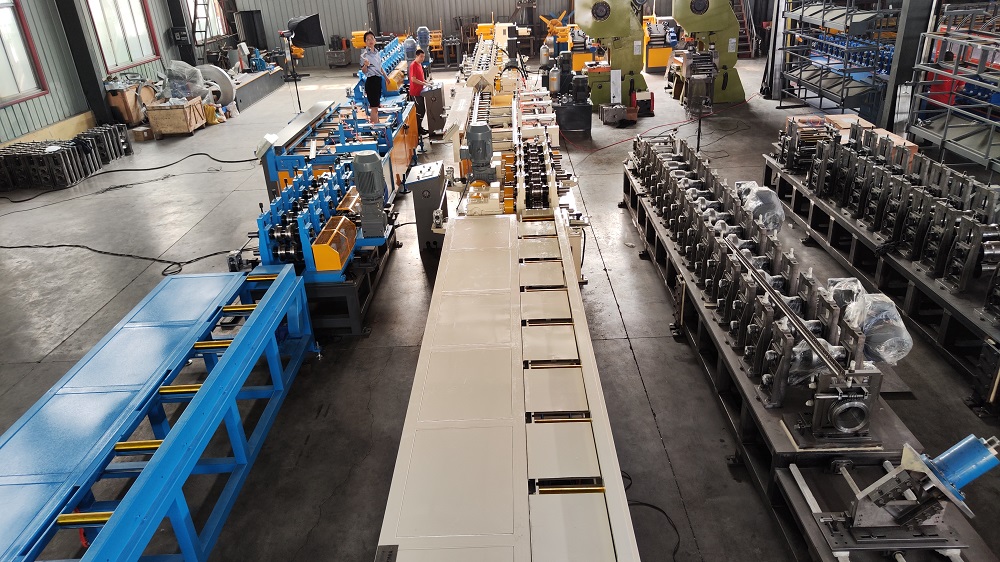
The Tee Forming Machine Transforming the Metalworking Industry
In the landscape of modern manufacturing, efficiency and precision remain the cornerstones of successful production processes. Among the myriad machines designed to enhance metalworking, the tee forming machine stands out as a critical tool for manufacturers looking to produce high-quality products with consistent accuracy. This article explores the functionality, applications, and advancements in tee forming machines, shedding light on their significant role in various industries.
What is a Tee Forming Machine?
A tee forming machine is a specialized piece of equipment designed to create 'T' shaped metal products from flat sheets or strips of material. These machines utilize a range of forming processes, including bending, rolling, and pressing, to achieve the desired shape. Tee-formed products are widely used in construction, automotive, aerospace, and many other sectors, making these machines integral to efficient manufacturing operations.
How Does a Tee Forming Machine Work?
The operation of a tee forming machine typically involves several stages. First, operators load a flat metal strip into the machine. Depending on the specific design of the tee forming machine, it may have rollers, dies, or other forming tools that shape the metal. The machine applies pressure and force to bend the material at predetermined angles, often using hydraulic or mechanical systems for precision.
Advanced tee forming machines are equipped with computer numerical control (CNC) systems, which enhance the machine's capabilities. CNC technology allows for automated adjustments and customizations, leading to higher production rates and improved accuracy. This level of sophistication is essential in today's fast-paced manufacturing environments, where demand for tailored solutions is ever-increasing.
Applications of Tee Forming Machines
Tee forming machines play a vital role in several industries. In construction, they are used to create structural components such as beams and reinforcements that are crucial for building stability. In the automotive industry, tee-formed metals contribute to the manufacturing of chassis, brackets, and supports that ensure vehicle integrity and safety. Similarly, in aerospace, they are employed to produce lightweight yet robust frames and components necessary for aircraft assembly.

Furthermore, tee forming machines cater to manufacturers producing HVAC systems, plumbing fixtures, and electrical housing, demonstrating their versatility across different applications. The ability to customize dimensions and specifications further enhances their utility, allowing manufacturers to meet unique project requirements efficiently.
Advancements in Tee Forming Technology
The evolving landscape of technology has led to significant advancements in tee forming machines. The introduction of automation and artificial intelligence (AI) has revolutionized how these machines operate. Manufacturing processes that once required manual adjustments can now be programmed and monitored in real time, leading to fewer errors and reduced labor costs.
Moreover, modern tee forming machines incorporate advanced materials and energy-efficient technologies, reducing their carbon footprint. Manufacturers are increasingly prioritizing sustainability, and these innovations support environmental commitments while maintaining high production standards.
Challenges and Considerations
Despite their numerous advantages, operators must be aware of the challenges associated with tee forming machines. The initial investment costs can be substantial, particularly for high-end machines with advanced features. Additionally, maintenance is crucial to ensure long-term reliability and performance. Regular inspections and servicing are necessary to prevent downtime and unexpected expenses.
Training personnel on the operation of these machines is equally important, as the complexity of the technology demands skilled operators to maximize efficiency and safety. Investing in proper education and safety protocols can help mitigate risks associated with machine operation.
Conclusion
In conclusion, the tee forming machine is an indispensable asset in contemporary manufacturing. Its ability to produce precise and customized 'T' shaped metal components serves a wide range of industries, reflecting the critical role of efficient machinery in driving progress. As technology continues to advance, tee forming machines will undoubtedly evolve, enabling manufacturers to meet the challenges of a rapidly changing market while ensuring quality and sustainability. The future of manufacturing is bright, and tee forming machines will continue to be at the forefront of this transformation.